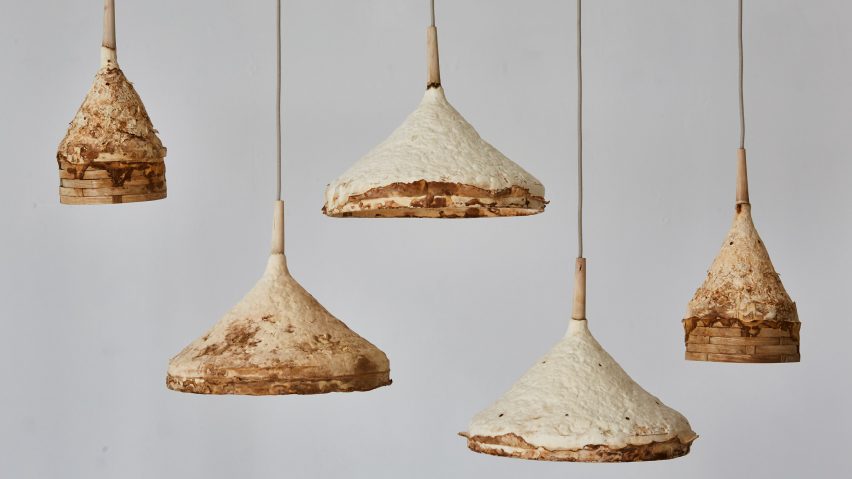
Mushroom mycelium used to create suede-like furniture by Sebastian Cox and Ninela Ivanova
Sebastian Cox has become the latest designer to start working with mushroom mycelium – the British furniture maker has teamed up with researcher Ninela Ivanova to investigate the material's potential in commercial furniture design.
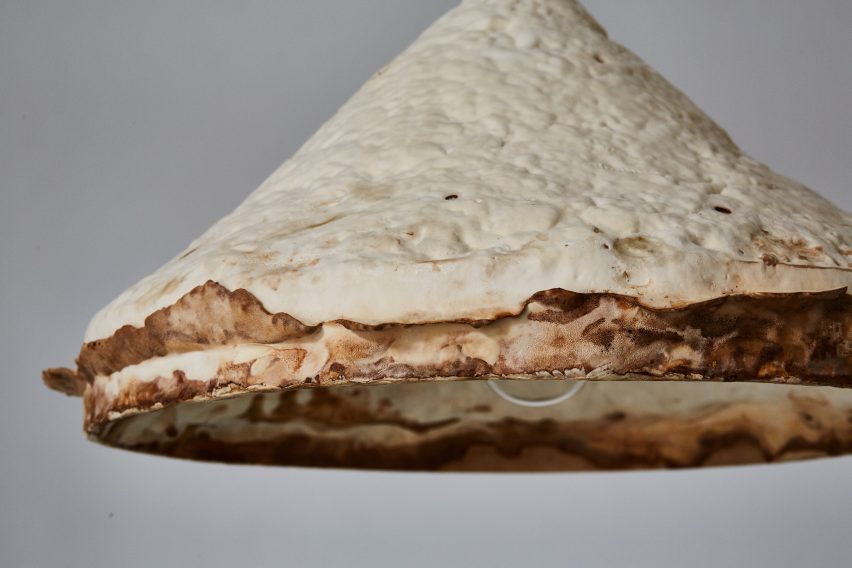
The material – which is formed from the vegetative part of a fungus – has been used in various architecture and design experiments recently, including a self-supporting structural column and an intricately textured dress.
But Cox and Ivanova wanted to use the fungal material to create more everyday products. Their project, called Mycelium + Timber, features a series of simple stools and lights with a suede-like texture, designed to suit any domestic interior.
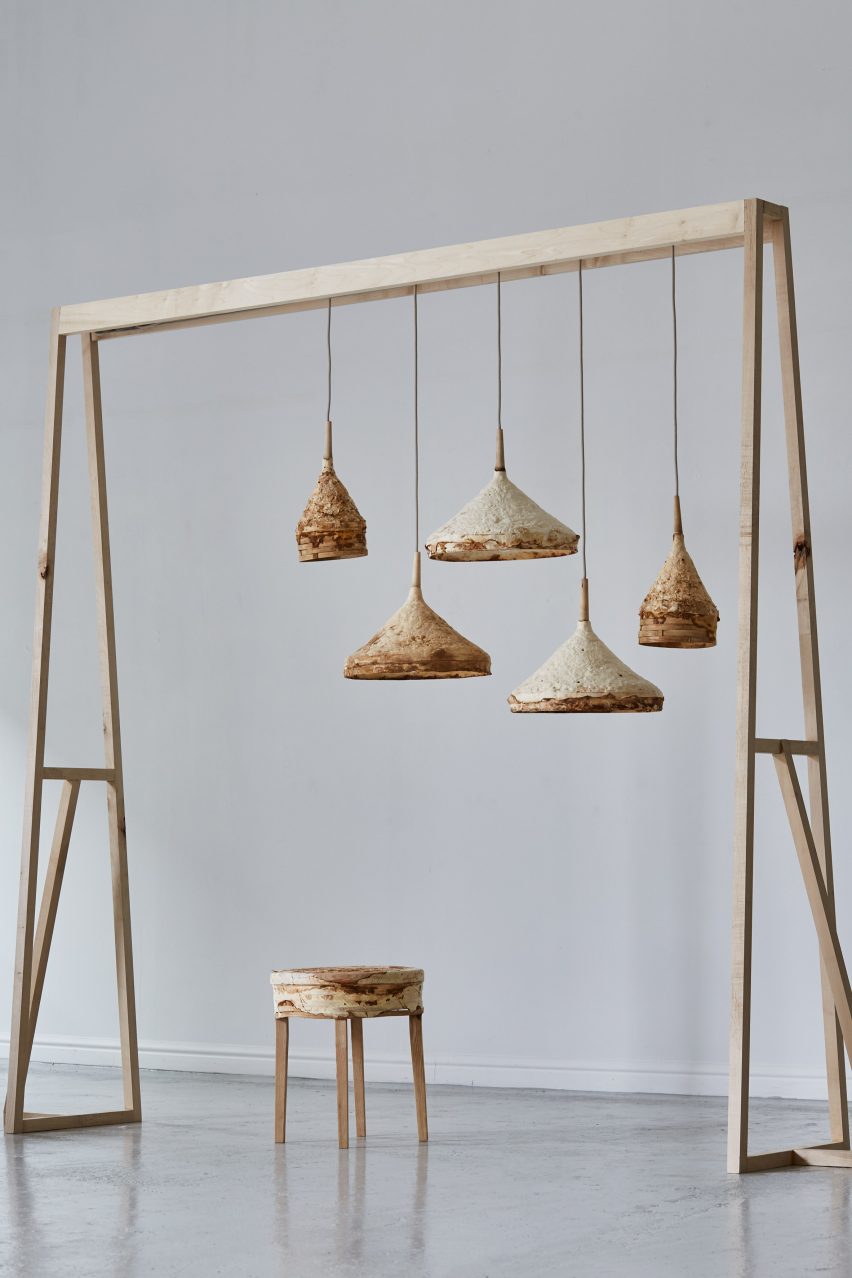
"What really excites us both is how you take this material out of the conceptual phase and put it into people's homes," Ivanova told Dezeen. "How do you craft the aesthetics to make something that is really beautiful, as you would with any other material?"
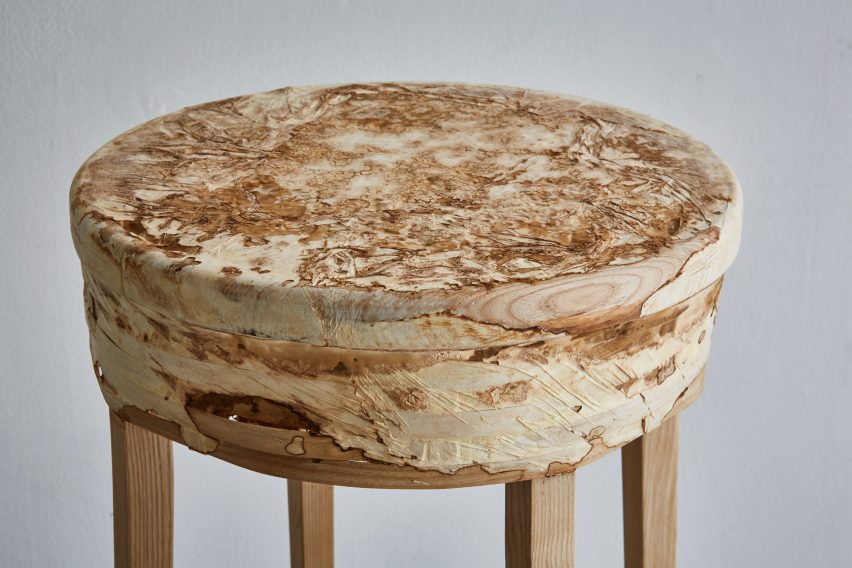
The duo are presenting the results of their experiments at Somerset House this week, as part of the London Design Festival exhibition Design Frontiers. Both products on show were created by combining mycelium with scrap willow wood from Cox's own woodland.
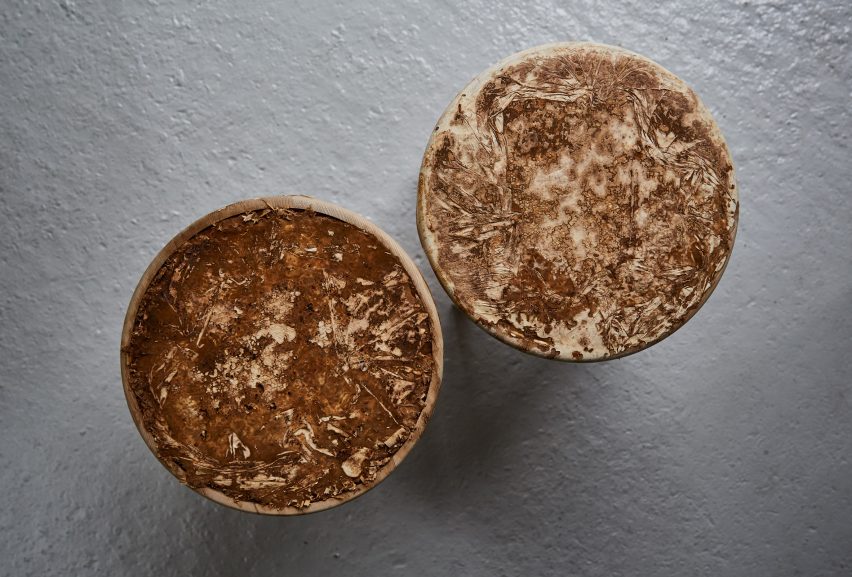
The discarded goat willow was sliced up to create thin strips, which were woven together to create individual moulds. Within these moulds, the designers added a type of fungus called fomes fomentarius, which was cultivated using more wooden strips as food.
"It's not just about the fungus, it's about the marriage of the two materials," said Ivanova. "It's not sustainability for us – it's just what makes sense. These two materials have a natural relationship in the woodland, so let's see how we can exploit that."
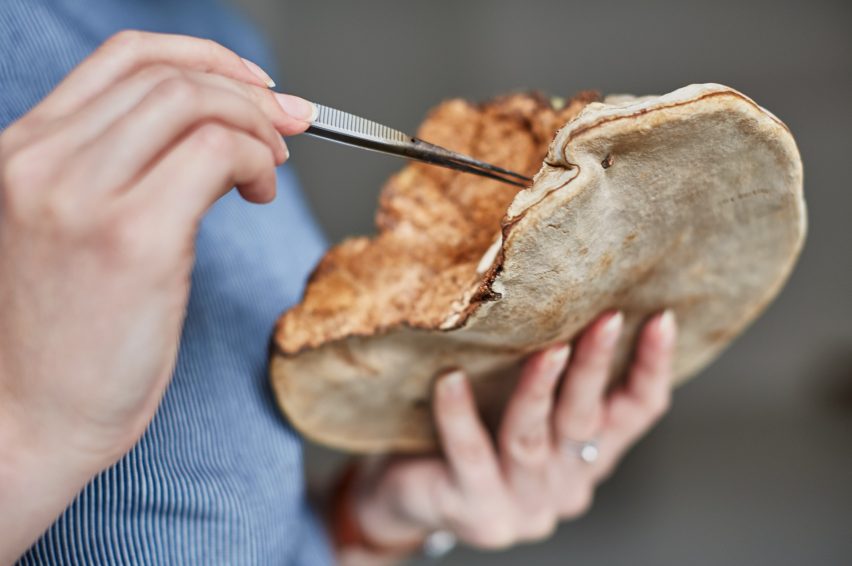
As a champion of natural materials, Cox is best known for his work with wood, on projects including a responsibly sourced oak, ash and beech kitchen and a collection of furniture made from coppiced hazel wood.
He had long held an ambition to find a natural alternative to the glues used in engineered wood products, which is what led him to team up with Ivanova, who has been researching mycelium for the past seven years as part of a PHD at Kingston University.
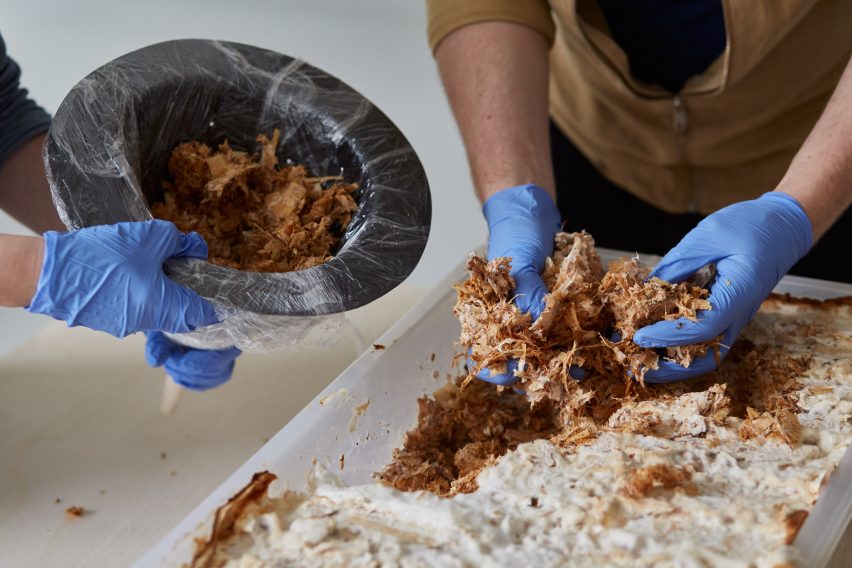
"In our workshop we don't use composite wood materials because I've never been quite satisfied with the binding agent holding the wood together," Cox said.
"As a result, I've always had a kind of fantasy interest in 'reinventing' a type of MDF and finding new ways to bind wood fibres into either sheets or mounded forms, ideally without glue."
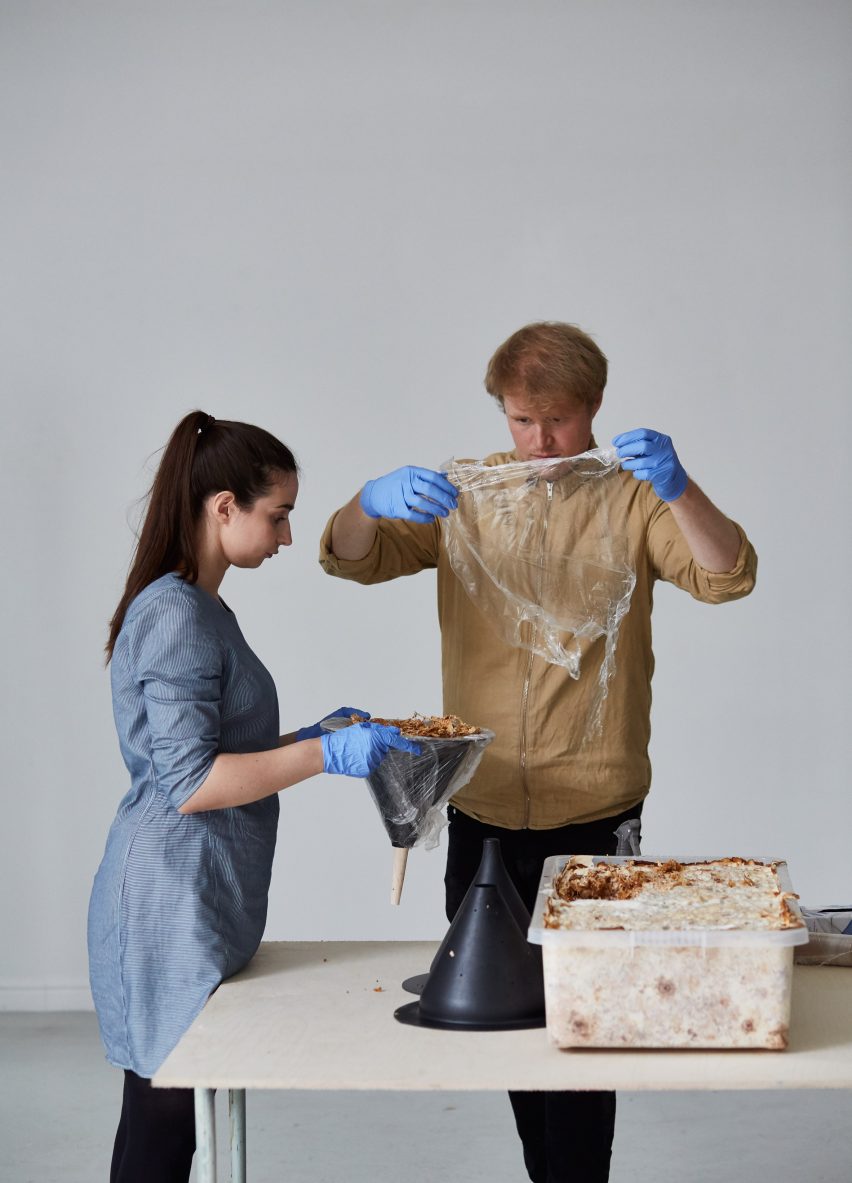
The pair plans to continue the collaboration, with the aim to launch a full collection of mycelium and wood composite products in the near future.
"Mycelium offers us the opportunity to create products that not only continue but advance our ethos of sustainability and test our ability as a studio to design for new methods of manufacture," added Cox.
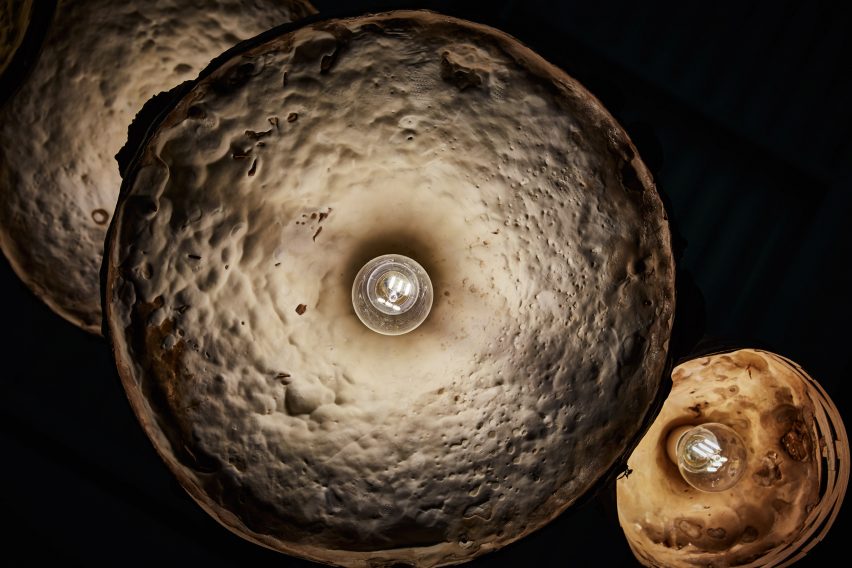
Mycelium + Timber is on show at Somerset House, Strand, WC2R 1LA, for the duration of the London Design Festival, which ends on 24 September 2017.
The Design Frontiers exhibition also includes a presentation by Danish textile brand Kvadrat that showcases 19 possible uses of its Canvas material and the launch of a new electronic accessories brand that aims to do away with "chaotic cords and broken cables".
Photography is by Petr Krejci.